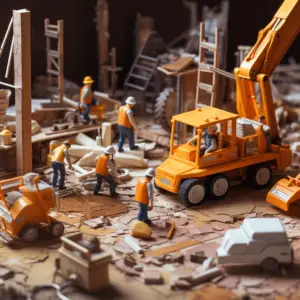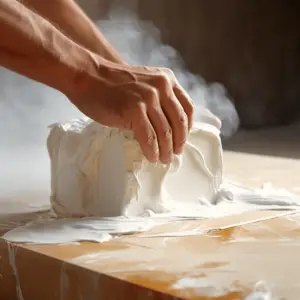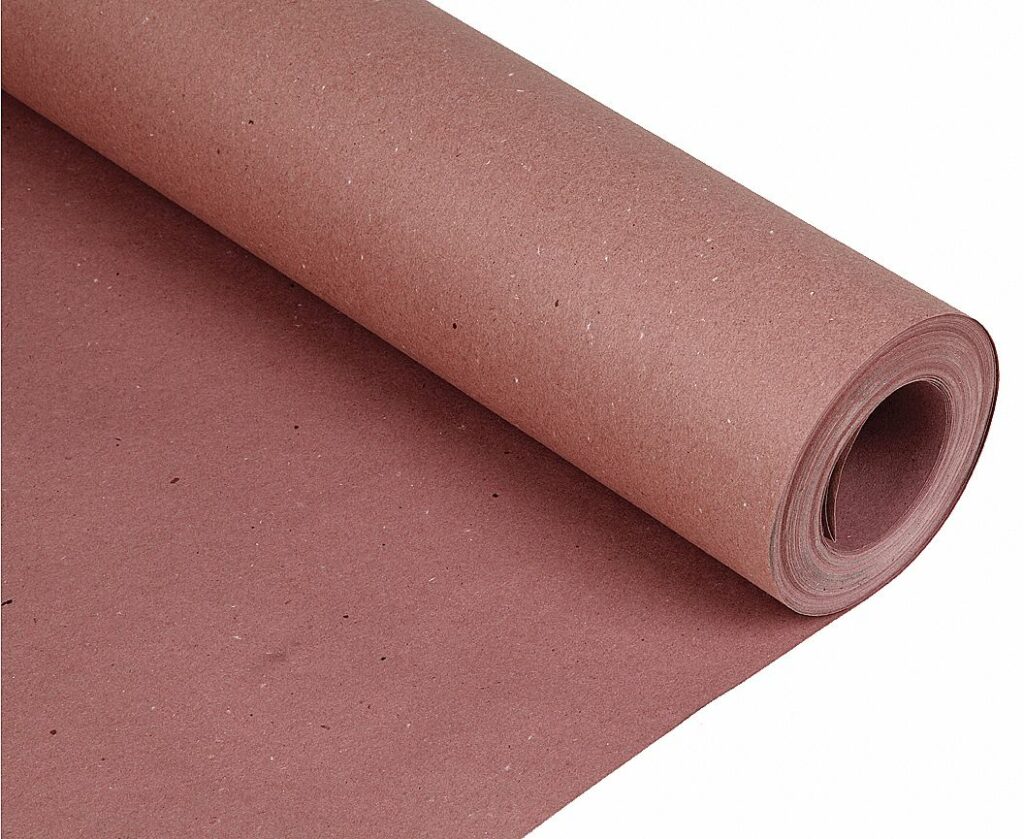When starting out in construction, it’s easy to get really frustrated trying to keep your jobsites clean. At some point, it looks like every time you get close to completing a project the messier the task/workers become.
One of the most essential things you’ll come to realize is that keeping your jobsite clean is an ongoing necessity that needs to be closely managed.
The great news is you can easily and consistently keep your jobsite clean all the way through the renovations or construction projects rather than trying to resolve the entire cleanup at the end. One of the products that many contractors and tradesmen often count on is builders paper.
Note that there are four types of builders paper: Ram Board, X Board, Builder Paper, and Rosin Paper. They all have different properties and prices, although Rosin Paper and Builders Paper are the most common. So in this article, we’re going to discuss Rosin Paper vs Builders Paper.
Table of Contents
Red Rosin Paper Vs Builders Paper Overview

Among the four stated options, Rosen Paper is considered the least expensive. It’s more like a pink color that offers a varied look from the other three types. It is also the thinnest.
As for the Builders Paper, things might get a little confusing. First, it’s important to understand that “builders paper” is a generic term used to describe the four options mentioned above. Nonetheless, this particular level of builders paper is actually known as Builders Paper.
It is slightly more expensive per roll compared to Rosin Paper, but it is a little bit more durable. Like Rosin, though, it can also be used as painted paper. Builders Paper has the color of a brown paper lunch bag, and it is thick enough for use in areas that will experience light traffic.
Other than color, is there any practical difference between these two types of paper?
Rosin Paper vs Builders Paper: Application
Rosin paper is an ideal option for covering surfaces that will be left alone without being tampered with. You can also use it on the floor for light projects such as painting, as it makes a great painting paper. However, if you’re going to use it on the floor, it should be for the limited time as possible.
In terms of coverage, you can find 501 square feet of red rosin paper on a roll at 167 feet long by 3 feet wide.
On the other hand, Builders Paper can be utilized at any time during a construction project or even any time that you want a protective layer over horizontal surfaces.
While it is most commonly used as temporary floor protection during construction, Builders Paper can also be used on vertical surfaces. You will get about 406 square feet on a roll. One roll is 140 feet long and 35 inches wide.
Rosin Paper vs Builders Paper: Durability
Rosin Paper can serve a considerable time if it is not tampered with or subjected to moisture. If you’re going to install it on the floor and walked on it, we recommended limiting it to a day or two. The suggested time can be affected by how many people are walking on it and how careful they are.
Builders Paper, on the other hand, can last on the floor a week or two with light traffic. This option lasts well when it’s attached in long runs with overlapping seams.
That said, though, we don’t recommend applying it for long straight runs like hallways; not unless you’re going to tape it on the floor on both sides. Else, the paper will shift and move around if it’s not attached to anything on the sides.
Installing Builders Paper

At a minimum, experts suggest using general 1.5 or 2-inch tape to hold the overlapping seams of the paper together. That regular tape will do a good job for a short-term builders paper installation.
In the event that you want to keep the paper installed for and longer period or are intending to carry out some more complex tasks, it would be a good idea to upgrade your tape. If your project is a bit more involving, you should consider utilizing a heavier paper.
Both Rosin Paper and Builders Paper is relatively wide and should add durability. Whether you’ll need a thicker, more durable tape will depend on the amount of traffic and the time you will have the paper installed.
Irrespective of the type of tape you use, we would recommend at least a 1.5-inch overlap of paper. Just keep in mind that cheaper tapes will wear out before the paper does, meaning you’ll have to periodically repair and replace the tape at some of the seams.
In the event that you’re protecting hardwood floors, avoid taping directly to the floor. The adhesive in the tape can wreck the polyurethane finish from the hardwood floors.
On the flip side, however, the longer the tape remains in place, the stronger the tape bond becomes. Therefore, the chances of the paint being damaged increases.
The Bottom Line
No matter what option you choose, keep in mind this is just a paper. It’s not really an “install and forget” situation. You have to regularly inspect the covered areas to make sure nothing has gotten under the paper that could affect the floor.
If you notice an area that’s ripped, torn or damaged, remove that area and replace it, or reinforce it with another piece.
You can enhance the longevity of the rosin paper or Builders Paper by keeping it clean. This can be done by weeping and removing dust and debris on a regular basis. This way, you will reduce the likelihood of tears in the papers, while keeping any dust and damage at bay.
Still, be smart enough to know when to pull it all out and replace it.


